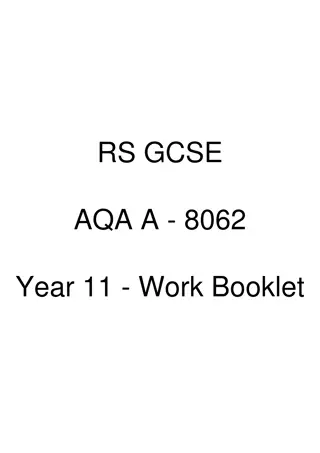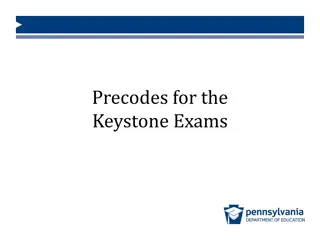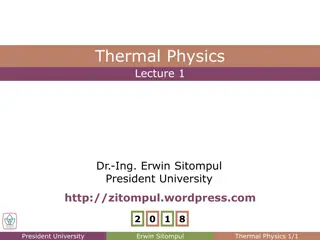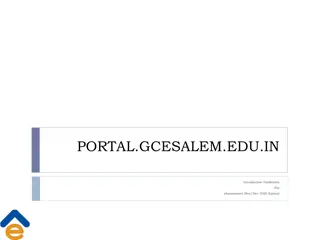Mastering 6-Mark Questions in GCSE Exams
Learn how to effectively answer 6-mark questions in GCSE exams by understanding the level marking criteria and utilizing the PEEL technique. A detailed example response is provided for a Geography question on the impact of fossil fuels on CO2 emissions, showcasing how to structure points, provide evidence, explain thoroughly, and link back to the main point within a coherent answer.
Download Presentation

Please find below an Image/Link to download the presentation.
The content on the website is provided AS IS for your information and personal use only. It may not be sold, licensed, or shared on other websites without obtaining consent from the author. Download presentation by click this link. If you encounter any issues during the download, it is possible that the publisher has removed the file from their server.
E N D
Presentation Transcript
How to answer 6 mark questions (GCSE)? The questions are level marked. This means that the detail of your answer counts rather than making 6 separate points.
Level 1 answers 1/2 marks out of 6 The answer is BASIC It contains descriptions rather than explanations It does not contain case study examples
Level 2 answers 3/4 marks out of 6 The answer is CLEAR It contains descriptions and some explanations It does contain case study examples in a basic way. It may not include statistics (data).
Level 3 answers 5/6 marks out of 6 The answer is DETAILED It contains descriptions and thorough explanations It contains case study examples and uses data to back up points that have been made.
When you answer a question that requires a longer answer, remember the PEEL technique. P E E L Make your POINT Give your EVIDENCE EXPLAIN your evidence If possible, LINK to your next statement or the original point.
GCSE Geography Unit 1: Challenges for the planet Explain how fossil fuels have caused the increase in CO2 emissions. (6)
Make your point The growth of the world population and the economic growth of newly industrialized countries such as India and China explain an increase in the use of fossil fuels. There are many more cars on the road.
Give and explain your evidence For instance, in China 75 per cent of energy produced in power stations comes from coal, the fossil fuel which releases the largest amount of carbon dioxide. For example, in Delhi, India, the number of cars has grown from half a million in 1970 to 5 million in 2008. Cars use fossil fuels to power them.
Link link back to the point Therefore, the rise of the amount of carbon dioxide released in the atmosphere is explained by the increased use of fossil fuels.
The growth of the world population and the economic growth of newly industrialized countries such as India and China explain an increase in the use of fossil fuels. For instance, in China 75 per cent of energy produced in power stations comes from coal, the fossil fuel which releases the largest amount of carbon dioxide. There are many more cars on the road(1). For example, in Delhi, India, the number of cars has grown from half a million in 1970 to 5 million in 2008(1). Cars use fossil fuels to power them. Therefore, the rise of the amount of carbon dioxide released in the atmosphere is explained by the increased use of fossil fuels.

















































